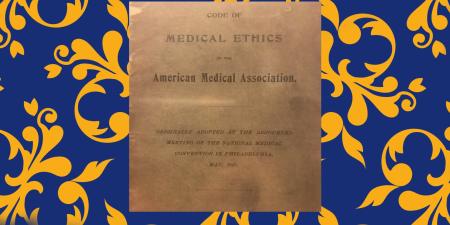Abstract
The COVID-19 pandemic exposed vulnerabilities of the United States’ routine and emergency supply chains of medicines and critical equipment. These vulnerabilities underscore an urgent need to prevent routine and emergency shortages by making drug manufacturing more transparent and by tracking how key supplies get to end users. Near real-time surveillance systems must be developed to monitor fluctuations in supplies of medicines and equipment. Implementation of such systems will require getting key stakeholders (clinicians, administrators, community members, manufacturers, and policy makers) to collaborate.
You Can’t Prevent a Problem if You Can’t See It Coming
Medical supply chains are pertinent not to a single medicine, equipment, or process but to all items and processes needed to care well for a patient. To provide health care, specific products— ranging from testing equipment to disposable supplies and pharmaceuticals—may need to be available to practitioners or patients. Some items may have originated thousands of miles away and crossed many national boundaries to reach the end user. The assessment of medical supply chains and approaches to mitigating disruptions are complicated by the diversity of medical supply chains, which range from highly engineered pharmaceuticals and complicated life support equipment to disposable test kits and generic drugs.
Although the challenges and requirements involved in supply chains related to different products can vary, supply chains develop because manufacturing of different products may be more readily and efficiently conducted in certain places than others. Private interest is an intrinsic part of the reason for development of complex supply chains. Companies seek suppliers that have more direct access to critical components and have a labor market and regulatory environment more favorable to a particular business, and they are principally motivated by what minimizes risk and cost and maximizes profit. As a result of these considerations, medical supply chains have become highly distributed in numerous countries.
Routine and Emergency Medicine and Equipment Shortages
The COVID-19 pandemic drew national attention to the issue of medical supply shortages in the United States, evident in shortages of personnel protective equipment and ventilators in health care facilities across the nation.1 However, medical supply shortages have been a challenge for hospitals and health systems long before the COVID-19 pandemic. On a routine basis, many critical medical supplies—such as crystalloids, antibiotics, and pain medications—have intermittently been in short supply,2 putting both health care professionals and patients in a precarious position.
Whether the medical supply shortage is due to decreased production, increased demand, or problems with getting the supply to the end user in the last mile, there may be serious consequences for patients due to delays in treatment or receiving suboptimal care. Substitutes for therapies that are in short supply may not be as effective in treating a patient’s condition or may have unintended negative effects on the patient’s health outcomes. In many instances, hospitals and health systems do not have the ability to predict potential supply shortages, further complicating their ability to prevent shortages by securing the needed supplies or equipment through alternate suppliers.
Safeguarding medical supply chains is an essential part of ensuring delivery of care,3 and failure to appropriately safeguard them could be particularly harmful for the most vulnerable. Providing safeguards relies on 3 components:
- A significantly more complete understanding of supply chains, with particular emphasis on where they might be most vulnerable. It is not sufficient to assume that industries will take care of the chains because it is in their interest to do so. The parts of interest to companies—which largely revolve around protecting supplies for their particular products—may not be the parts most important to the collective interest. For example, that critical commodities might come from nations hostile to US broader geopolitical interest is not necessarily a matter of concern to companies accustomed to receiving those commodities.
- An awareness that private-public partnerships are inevitable. This awareness should be coupled with a clear understanding that partners’ incentives and perspectives are different.
- A firm plan to ensure security of supply chains in the event of emergencies and particularly in times of geopolitical conflict. We do not advocate this readiness in the spirit of building leverage but in the spirit of ensuring that essential services are continued.
The last mile of delivery refers to the part of the supply chain from a distribution hub to being in the hands of a patient. It is an oft-neglected part of the supply chain but can be as subject to disruption as other parts of the chain thousands of miles away. Labor, transportation, or even jurisdictional issues can occur here as easily as they can at much closer locations.
Why Are Chains Opaque?
The security of a supply chain means different things to different actors. Companies providing specific goods and services have supply chains, and their business depends on keeping those secure. Private actors generally will not intentionally put parts of their supply chains in vulnerable areas if they cannot devise a way of coping with potential risk, usually by specifically planning for an alternate source and pricing risk and replacement into the cost of the commodity. If an individual company has the means of or interest in overcoming a disruption, it likely will find a way. However, the company is not generally factoring social welfare into its risk decisions. Their supply chain resilience—or lack of it—may have direct impact on general welfare, but general welfare is not the basis of decision making.
Divergence between private and collective interest can become a serious problem for overall supply chain security.
Although it is often true that supply chains secured for a single company or even for a set of companies at least correlate with regional and broader global security, the fact that a company might have what it views as a secure supply chain for a particular period does not mean that a community can be assured of a secure supply across every commodity. Private interest may in fact be best preserved by concealing information, not only from possibly malevolent actors but also from regulators and competitors. The divergence between private and collective interest can become a serious problem for overall supply chain security and thus for delivery of medical services overall. Although there may be value overall in every actor having visibility into supply chain vulnerabilities, to individual companies the benefit might not be clear and indeed might seem to go against their obvious interest. However, there are reasons for private actors to support greater transparency that go beyond their immediate interest. We will consider these in more detail in subsequent sections.
Need for Surveillance
Prediction and prevention of medical supply shortages is critical to mitigating their resultant negative impacts. A 2019 report released by the federal Drug Shortages Task Force called for “adoption of risk management plans to proactively assess risk and to predict and prevent supply disruptions.”4 Prediction and prevention are predicated on having advance knowledge of potential shortages. Such situational awareness can only be achieved if hospitals and health systems have access to supply chain data in near real-time. What are some past and current trends in availability of a supply leading to a shortage? How much of a given critical medical supply from various manufacturers is currently in the market? Where are various medical supplies—and their components—made? This type of information can help communicate the likelihood of potential shortages to health care facilities, allowing them either to prevent a shortage by turning to suppliers more likely to be able to accommodate their needs or to plan for an inevitable shortage by securing alternate therapies.
One example of an existing, near real-time surveillance system in the United States is the Centers for Disease Control and Prevention’s National Notifiable Diseases Surveillance System, which is the basis of publicly available, weekly updated cases of nationally notifiable infectious diseases and conditions reported by every state.5 A near real-time surveillance system for the US medical supply chain can be built following a similar model. A relatively simple, and immediately feasible, version of this system could include data inputs on available (and optimal levels of) medical supplies and equipment voluntarily entered into the system by hospitals and health systems across the country. Such a system could help medical facilities identify hospitals and health systems that may have a surplus of a given supply and equipment that a facility in need could potentially acquire. Through establishment of memoranda of understanding, hospitals and health systems could be incentivized to participate in such a system as an approach to alleviating future shortages that their organization might face. Participation by hospitals and health systems could also be incentivized through state or federal grants or tax cuts.
A more advanced version of this surveillance system could include information on suppliers—the location of their manufacturing facilities and the source of their supply and equipment components. Such information, monitored by emergency managers or other designated hospital staff, could cue health care facilities if, and when, the source country for a given medical supply or piece of equipment (or their components) experiences potential interruptions in production due to a natural disaster or sociopolitical unrest, for example.
Such a near real-time medical supply and equipment surveillance system could be used both routinely and during disasters and public health emergencies to gain situational awareness of the resources that exist within the larger US health system and those that exist within the supply chain that could potentially be leveraged to create surge capacity.
Transparency Is Surveillance Success
In order for a near real-time surveillance system to be functional, key stakeholders—whether hospitals and health systems or manufacturers of medical supplies and equipment—need to (a) be willing to share their data for input into the system and (b) have the resources and commitment to update these data on a (near) daily basis. Given that many hospitals and health systems publicly report data on number of beds, available capacity, and costs of medical supplies and equipment, it would seem reasonable to believe that such facilities may be willing to share data concerning their existing medical supplies and equipment.
However, the current (and long-standing) level of opacity concerning where a given product and its components are manufactured makes the inclusion of manufacturer-related data in the surveillance system a major hurdle. Whether the surveillance system is public or only accessible to parties (for example, US government agencies, hospitals, and health systems) on a need-to-know basis, manufacturers of medical supplies and equipment would need to support more transparency concerning their products, where they are produced, and where components are sourced. Given manufacturers’ historical resistance to sharing such data, a mix of incentives and disincentives would likely be needed to get manufacturers to share their data.
Legislation that incentivizes medical supply and equipment manufacturers to be more transparent—and to share data—regarding where their products and product components are manufactured is an important step in helping health care facilities have the information they need to predict and mitigate potential shortages. Such incentives could include government grants, subsidies, and tax breaks based on the level of transparency. On the other hand, manufacturers that choose to remain opaque could be subjected to higher taxes.
There are additional hurdles to requiring manufacturers to share data that would facilitate predicting and preventing drug shortages. For example, the US Food and Drug Administration (FDA) cannot ask manufacturers to report an increase in demand for drugs under current laws.6 On the other hand, under the Safety and Innovation Act, the FDA can require manufacturers to report “supply disruptions, delays, and discontinuations in manufacturing”6—which can help inform a medical supply chain surveillance system and facilitate early drug shortage notification.
Roles of Health Systems and Public Governance
Given the long history of lack of transparency in information related to medical supply and equipment manufacturing, much advocacy will likely be needed on the part of health care professionals, patients, and communities. Ultimately, it is the work of health care professionals and the health of their patients that are on the line during medical supply and equipment shortages. Advocacy by these very stakeholders is critical to getting policy makers to prioritize solutions that encourage manufacturers to be more transparent and to input data in a supply chain surveillance system.
Next Steps
Realizing a near real-time surveillance system to develop situational awareness of fluctuations in availability of critical medical supplies and equipment will require getting the key stakeholders at the table—including health care professionals and administrators, patients and communities, medical supply and equipment manufacturers, and policy makers. Long before the pandemic, health care facilities routinely experienced shortages in supplies critical to patient care. The COVID-19 pandemic further exposed the vulnerability of the US medical supply chain by introducing a sense of urgency into the issue of increased manufacturing transparency and supply chain data tracking to both prevent shortages and swiftly address them before they occur. Advocates and policy makers should seize this moment to propose legislation that will help secure the US medical supply chain.
References
-
Ranney ML, Griffeth V, Jha AK. Critical supply shortages—the need for ventilators and personal protective equipment during the COVID-19 pandemic. N Engl J Med. 2020;382:e41.
-
Balch B. Shortages from syringes to dye for diagnostic exams: how world events are straining everyday health care supplies. AAMC News. July 5, 2022. Accessed October 6, 2023. https://www.aamc.org/news/shortages-syringes-dye-diagnostic-exams-how-world-events-are-straining-everyday-health-care-supply
-
Hopp WJ, Brown L, Shore C, eds; National Academies of Sciences, Engineering, and Medicine. Building Resilience Into the Nation’s Medical Product Supply Chains. National Academies Press; 2022.
-
Drug Shortages Task Force. Drug Shortages: Root Causes and Potential Solutions. US Food and Drug Administration; 2019. Updated February 21, 2020. Accessed November 21, 2023. https://www.fda.gov/media/131130/download
-
Nationally notifiable infectious diseases and conditions, United States: weekly tables. Centers for Disease Control and Prevention. Accessed October 6, 2023. https://wonder.cdc.gov/nndss/nndss_weekly_tables_menu.asp
-
Goldberg P. Richard Plazdur discusses root causes of cisplatin and carboplatin shortage and what can be done to alleviate it. Cancer Letter. May 30, 2023. Accessed November 10, 2023. https://cancerletter.com/conversation-with-the-cancer-letter/20230530_1/



